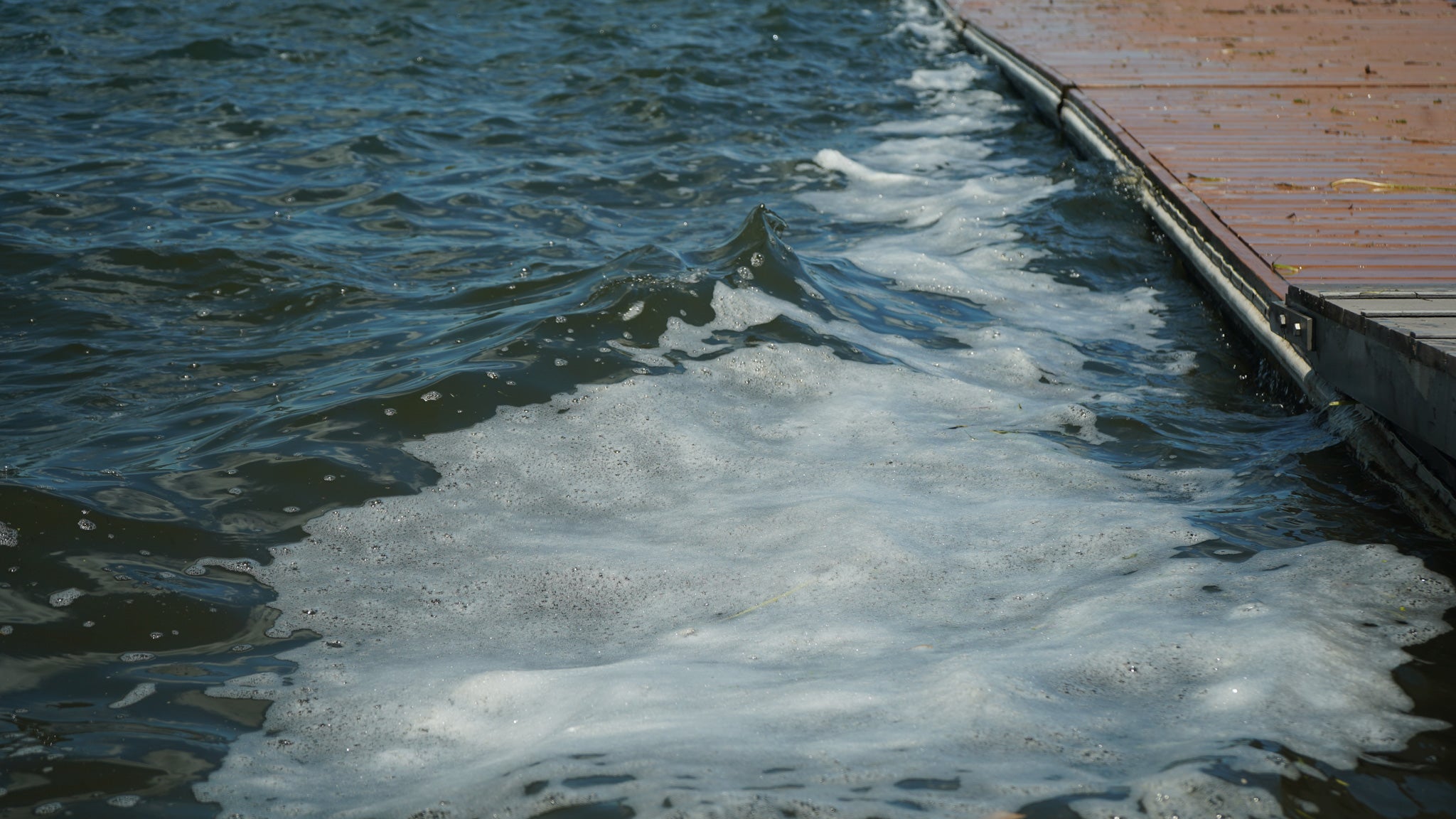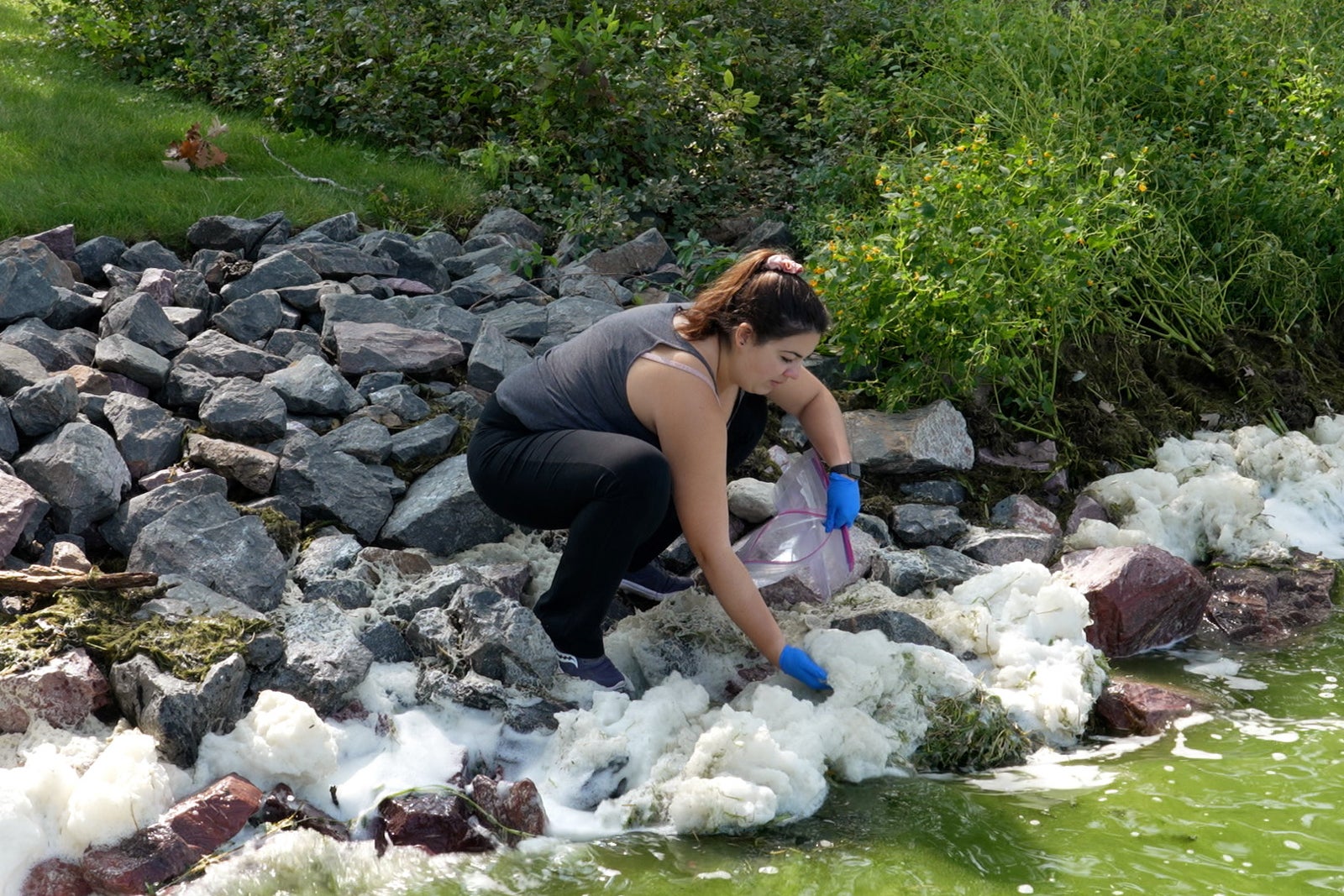So-called “forever chemicals” found in fish from two Madison-area bodies of water have prompted a new health advisory from state health and natural resource officials.
Per-and polyfluoroalkyl substances, also known as PFAS, have been found in all fish sampled from Lake Monona and Starkweather Creek. Specifically, perfluorooctane sulfonic acid, or PFOS, was detected at levels that have prompted a change in how often people should eat five species of fish.
“We advise that consumers limit their exposure to pollutants by eating no more than one meal per month of large mouth bass, northern pike, walleye and yellow perch. For bluegill caught in either water body we are advising consumers to limit their consumption to no more than one meal per week,” Mark Werner with the Wisconsin Department of Health Services said Wednesday in a conference call with reporters about fish from these two bodies of water.
Stay informed on the latest news
Sign up for WPR’s email newsletter.
There are thousands of PFAS chemicals which are used in nonstick cookware, waterproof clothing and certain firefighting foams, some of which have been banned in cities like Madison and Fond du Lac.
The most commonly studied PFAS and the ones driving state regulations are PFOS and PFOA, perfluorooctanoic acid. Both have been linked to an increased cancer risk and other health problems.
The highest concentration of PFOS was found in a stream on the southeast side of the Dane County airport, according to state Department of Natural Resources. Concentrations of the chemicals were lower in areas where fish were taken from Lake Monona, which is to be expected, officials said, as water moves north to south through the watershed.
Starkweather Creek begins near the Dane County airport and feeds into Lake Monona.
“Because fish move in response to water temperature and food availability, it is unknown how long the fish caught in Starkweather Creek had resided there,” said Darsi Foss, Environmental Management Division administrator with the DNR. “Based on the fish tissue samples, we worked with state health officials to determine if existing fish advisory for Starkweather Creek and Lake Monona was still protective.”
The latest testing was done in October at the two Dane County bodies of water. Previous testing was done across the state near known or suspected PFAS contamination sites including airports, fire training locations and some municipal wells.
Madison Mayor Satya Rhodes-Conway said in a statement that the city’s health department will be publicizing the fish consumption advisories by putting up new signage at lake access points and along Starkweather Creek. The city will also host two public meetings and send mailed notifications to those who live along the water.
“The city is taking immediate steps to inform the public about the new, more restrictive fish advisories,” said Mayor Rhodes-Conway. “The city will continue to follow the best available science to protect the public’s health. I urge people to take this advisory seriously and recognize that small fish are of concern as well.”
The revised fish consumption advice comes on the same day as the DNR held a public listening session on PFAS in Marinette. PFAS have been found there along with Madison and other parts of the state.
There currently is no maximum contaminant levels established at the federal level for PFAS chemicals. However, the U.S. Environmental Protection Agency has advised not exceeding 70 parts per trillion in groundwater.
In June, Gov. Tony Evers and the state DNR proposed new groundwater standards for the enforcement of PFAS. The state recommendations are below the federal advisory at 20 parts per trillion for drinking water.
Wisconsin Public Radio, © Copyright 2025, Board of Regents of the University of Wisconsin System and Wisconsin Educational Communications Board.





